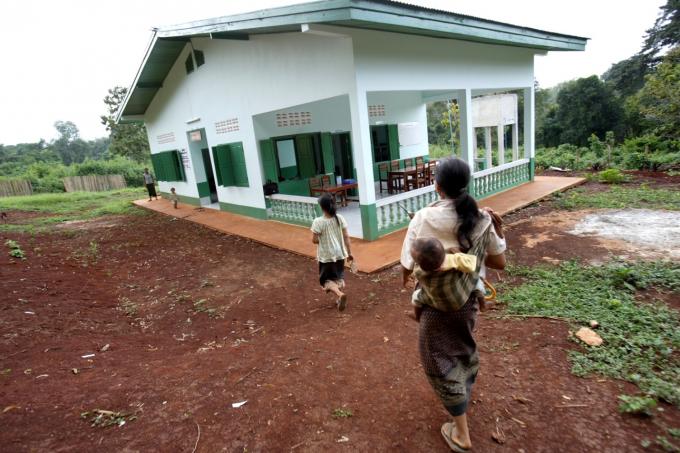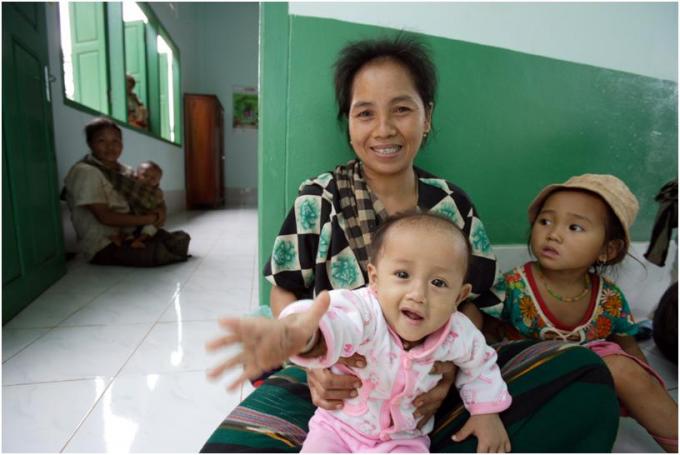Village clinics save lives in Laos

Save the Children builds many of these village clinics in northern Laos each year, to increase the percentage of the population with “access to health”. We use the World Health Organisation’s definition of access, which is a health facility within 5km or one hour’s walk.
Each clinic costs about AU$60,000 to build and equip with medical equipment and furniture. This includes the provision of clean water and sanitation.
AU$70,000 not only pays for complete costs for construction and equipment but goes a long way to providing comprehensive training for the nurses that staff the facility.
Nan District now has 91% of the population with “access to health”, increased from 48% just three years ago. It doesn’t take long or much money to have an impact. Infant mortality (children under 12 months) and child mortality (children under 5 years) have decreased 40% in three years.
Each village clinic serves a cluster of 5-8 villages with a combined population of between 3,000 – 4,000 people. That’s the size of a small country town in Australia. The clinics have a general medicine consultation room, a three-bed ward for people who need care overnight, a specific maternal and child health room and a dispensary. No appointments are necessary and the nurses are there 7 days a week.
Save the Children does not employ clinical staff; we provide skills training, and better facilities and equipment, to strengthen the public health system. The Lao Government pays the nurses wages and provides ongoing maintenance for the clinic.
The biggest changes such a clinic makes are for rural women and their children. Bringing health care within one hour’s walk can literally change, and save, their lives.
Bounsang has a fever and is listless, and the diagnosis is respiratory infection. He is a good weight and size for his age, which means there are no nutrition concerns, and indicates he will recover quickly once provided with medication for the infection.
The local community is Khmu ethnicity. The woman and her children speak Khmu language but the nurse Vilayvong speaks Lao as her first language. Vilayvong – employed by the government on a salary of less than $100 per month – has taught herself some Khmu in order to provide a better service to the local community. Her commitment is inspiring and her care approach is professional, patient and gentle.

Growth monitoring has been introduced by Save the Children’s technical trainers as an early check mechanism for long-term childhood stunting, which until recently has been prevalent in local communities. Nurse Vilayvong routinely checks most children that come through the clinic.
The nurse uses a simple visual chart to do health promotion with his mother, to educate and encourage her to provide a range of foods – including vegetables and some protein – not only the staple of sticky rice.
It is clear he’s a well-loved baby. He is scrupulously clean and has been brought to the clinic early in his illness. He’s the youngest of nine children, six of whom are surviving. It is hard work for his mother Kham, 40, to meet all their needs, as well as work in the fields to grow crops. The nurse encourages her to discuss contraception with her husband.
 Laos
Laos